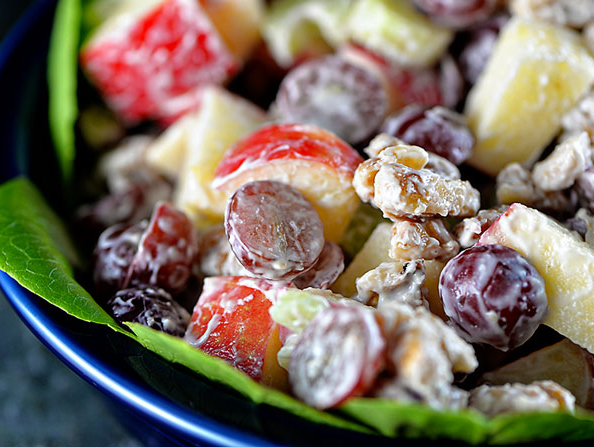
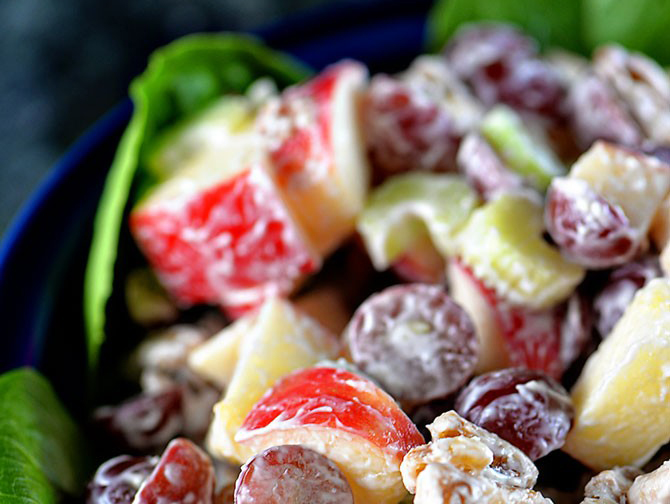
Waldorf Salad
The classic Waldorf Salad makes a delicious salad recipe. Including apples, celery, nuts, and grapes, this salad is always refreshing.
Ingredients
- 2 Persons
- 4 Persons
- 6 Persons
Apples
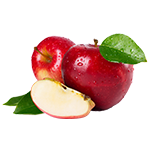
The apple tree is a deciduous tree in the rose family best known for its sweet, pomaceous fruit, the apple. It is cultivated worldwide as a fruit tree, and is the most widely grown species in the genus Malus.
3 red apples (Honey Crisp, Red Delicious), unpeeled and chopped into bite-sized pieces
Celery
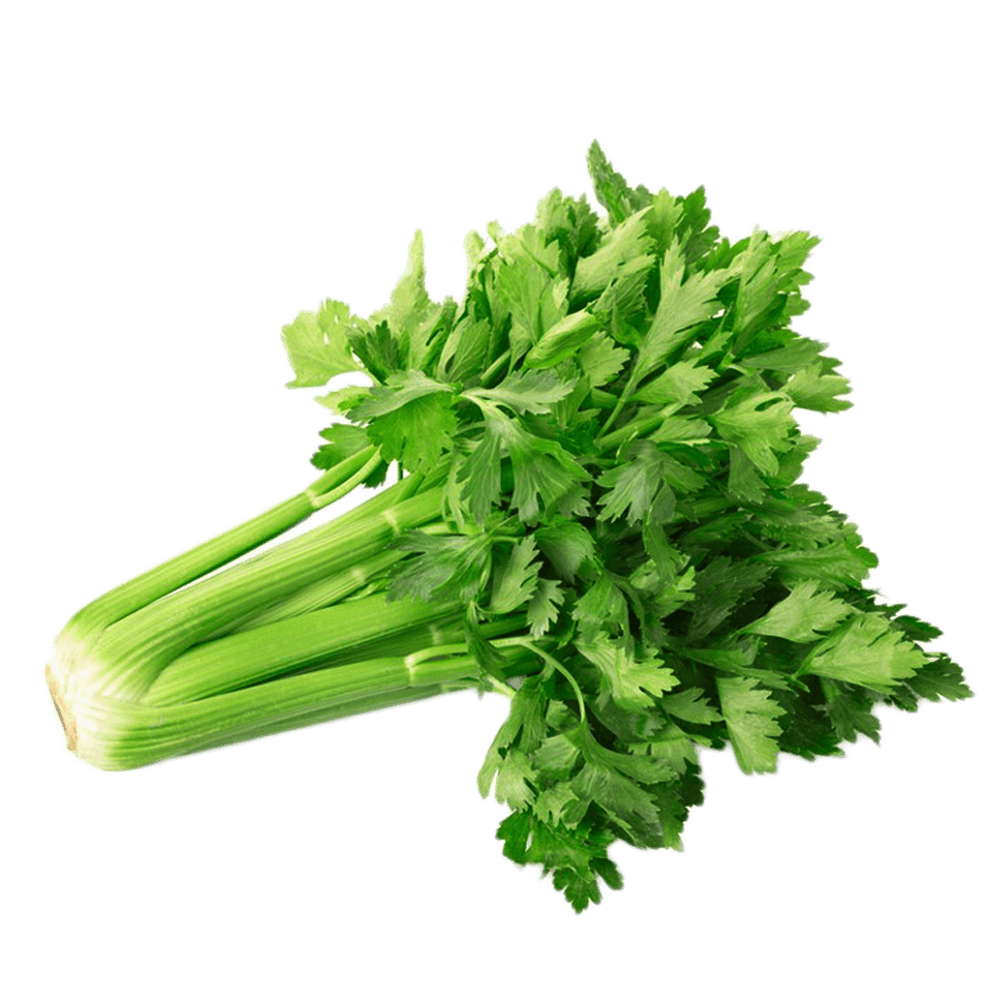
Celery a marshland plant variety in the family Apiaceae has been cultivated as a vegetable since antiquity. Depending on location and cultivar either its stalks leaves or hypocotyl are eaten and used in cooking.
6 ribs celery, sliced
Grapes
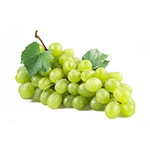
A grape is a fruiting berry of the deciduous woody vines of the botanical genus Vitis. Grapes can be eaten fresh as table grapes or they can be used for making wine, jam, juice, jelly, grape seed extract, raisins, vinegar, and grape seed oil.
2 cup red seedless grapes, halved
Walnuts
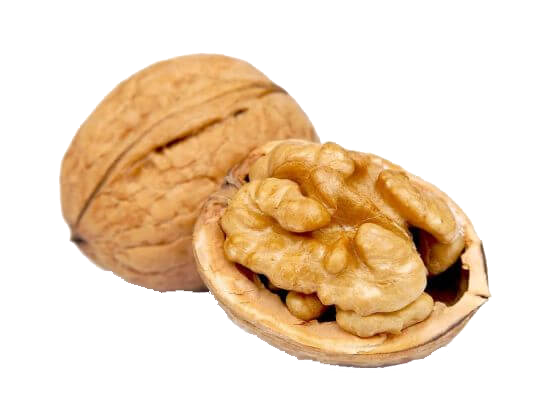
A walnut is the nut of any tree of the genus Juglans, particularly the Persian or English walnut, Juglans regia. Technically a walnut is the seed of a drupe or drupaceous nut, and thus not a true botanical nut.
1 1/2 cup walnuts halves
Mayonnaise
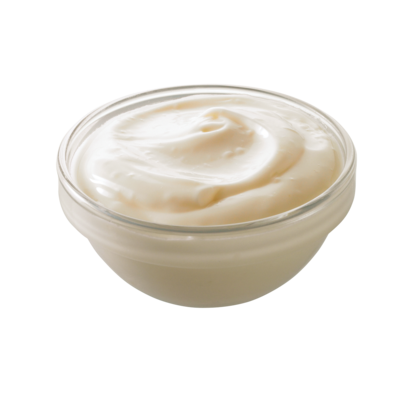
Mayonnaise is a thick, creamy dressing often used as a condiment. It is a stable emulsion of oil, egg yolk, and either vinegar or lemon juice, with many options for embellishment with other herbs and spices.
1/2 Cup mayonnaise
Leaf Lettuce
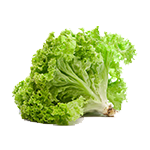
Lettuce (Lactuca sativa) is an annual plant of the daisy family Asteraceae. It is most often grown as a leaf vegetable, but sometimes for its stem and seeds. Lettuce was first cultivated by the ancient Egyptians who turned it from a weed, whose seeds were used to produce oil, into a food plant grown for its succulent leaves, in addition to its oil-rich seeds. Lettuce spread to the Greeks and Romans, the latter of whom gave it the name lactuca, from which the English lettuce is ultimately derived. By 50 AD, multiple types were described, and lettuce appeared often in medieval writings, including several herbals. The 16th through 18th centuries saw the development of many varieties in Europe, and by the mid-18th century cultivars were described that can still be found in gardens. Europe and North America originally dominated the market for lettuce, but by the late 20th century the consumption of lettuce had spread throughout the world.
large lettuce leaves
Apples

The apple tree is a deciduous tree in the rose family best known for its sweet, pomaceous fruit, the apple. It is cultivated worldwide as a fruit tree, and is the most widely grown species in the genus Malus.
1 red apples (Honey Crisp, Red Delicious), unpeeled and chopped into bite-sized pieces
Celery

Celery a marshland plant variety in the family Apiaceae has been cultivated as a vegetable since antiquity. Depending on location and cultivar either its stalks leaves or hypocotyl are eaten and used in cooking.
2 ribs celery, sliced
Grapes

A grape is a fruiting berry of the deciduous woody vines of the botanical genus Vitis. Grapes can be eaten fresh as table grapes or they can be used for making wine, jam, juice, jelly, grape seed extract, raisins, vinegar, and grape seed oil.
1 cup red seedless grapes, halved
Walnuts

A walnut is the nut of any tree of the genus Juglans, particularly the Persian or English walnut, Juglans regia. Technically a walnut is the seed of a drupe or drupaceous nut, and thus not a true botanical nut.
1/2 cup walnuts halves
Mayonnaise

Mayonnaise is a thick, creamy dressing often used as a condiment. It is a stable emulsion of oil, egg yolk, and either vinegar or lemon juice, with many options for embellishment with other herbs and spices.
4 tablespoons mayonnaise
Leaf Lettuce

Lettuce (Lactuca sativa) is an annual plant of the daisy family Asteraceae. It is most often grown as a leaf vegetable, but sometimes for its stem and seeds. Lettuce was first cultivated by the ancient Egyptians who turned it from a weed, whose seeds were used to produce oil, into a food plant grown for its succulent leaves, in addition to its oil-rich seeds. Lettuce spread to the Greeks and Romans, the latter of whom gave it the name lactuca, from which the English lettuce is ultimately derived. By 50 AD, multiple types were described, and lettuce appeared often in medieval writings, including several herbals. The 16th through 18th centuries saw the development of many varieties in Europe, and by the mid-18th century cultivars were described that can still be found in gardens. Europe and North America originally dominated the market for lettuce, but by the late 20th century the consumption of lettuce had spread throughout the world.
large lettuce leaves
Apples

The apple tree is a deciduous tree in the rose family best known for its sweet, pomaceous fruit, the apple. It is cultivated worldwide as a fruit tree, and is the most widely grown species in the genus Malus.
2 red apples (Honey Crisp, Red Delicious), unpeeled and chopped into bite-sized pieces
Celery

Celery a marshland plant variety in the family Apiaceae has been cultivated as a vegetable since antiquity. Depending on location and cultivar either its stalks leaves or hypocotyl are eaten and used in cooking.
4 ribs celery, sliced
Grapes

A grape is a fruiting berry of the deciduous woody vines of the botanical genus Vitis. Grapes can be eaten fresh as table grapes or they can be used for making wine, jam, juice, jelly, grape seed extract, raisins, vinegar, and grape seed oil.
1 1/2 cup red seedless grapes, halved
Walnuts

A walnut is the nut of any tree of the genus Juglans, particularly the Persian or English walnut, Juglans regia. Technically a walnut is the seed of a drupe or drupaceous nut, and thus not a true botanical nut.
1 cup walnuts halves
Mayonnaise

Mayonnaise is a thick, creamy dressing often used as a condiment. It is a stable emulsion of oil, egg yolk, and either vinegar or lemon juice, with many options for embellishment with other herbs and spices.
8 tablespoons mayonnaise
Leaf Lettuce

Lettuce (Lactuca sativa) is an annual plant of the daisy family Asteraceae. It is most often grown as a leaf vegetable, but sometimes for its stem and seeds. Lettuce was first cultivated by the ancient Egyptians who turned it from a weed, whose seeds were used to produce oil, into a food plant grown for its succulent leaves, in addition to its oil-rich seeds. Lettuce spread to the Greeks and Romans, the latter of whom gave it the name lactuca, from which the English lettuce is ultimately derived. By 50 AD, multiple types were described, and lettuce appeared often in medieval writings, including several herbals. The 16th through 18th centuries saw the development of many varieties in Europe, and by the mid-18th century cultivars were described that can still be found in gardens. Europe and North America originally dominated the market for lettuce, but by the late 20th century the consumption of lettuce had spread throughout the world.
large lettuce leaves
Directions
-
1
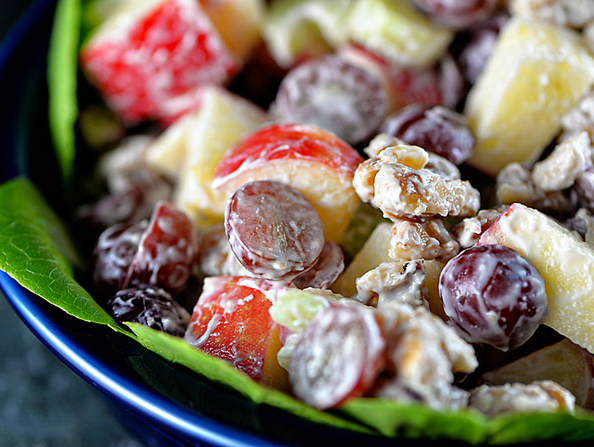 Add apples, celery, grapes, and walnuts to medium size bowl. Stir in mayonnaise.
Add apples, celery, grapes, and walnuts to medium size bowl. Stir in mayonnaise. -
2
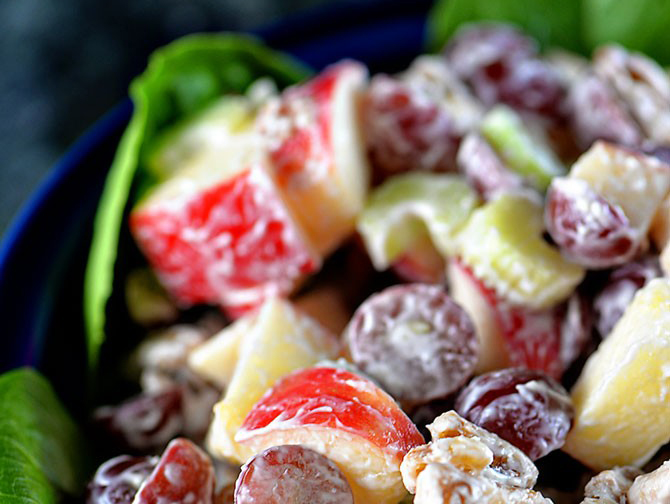 When ready to serve, place large lettuce leaves onto a salad plate or bowl. Top with apple mixture and serve cool.
When ready to serve, place large lettuce leaves onto a salad plate or bowl. Top with apple mixture and serve cool.